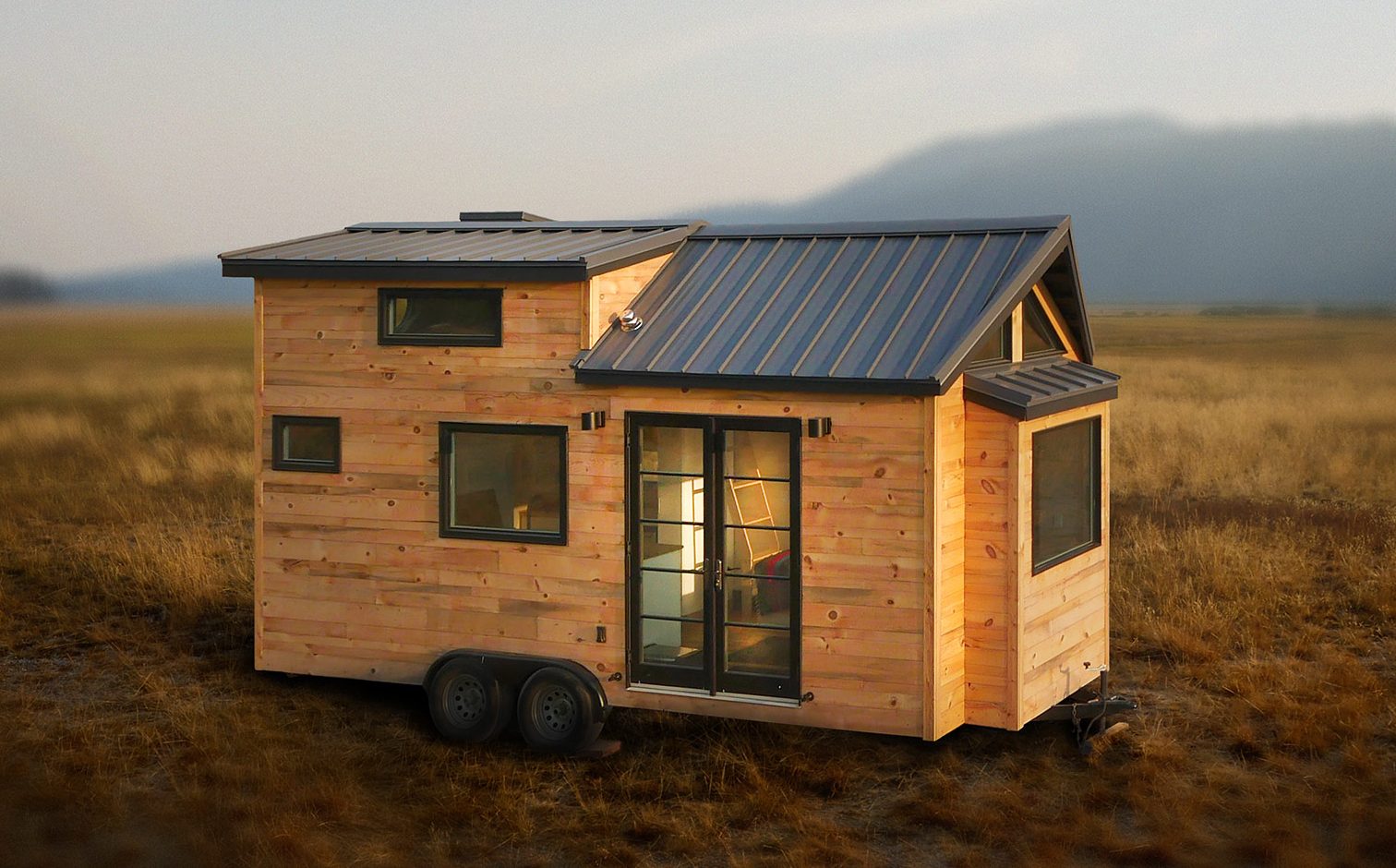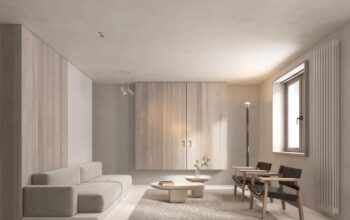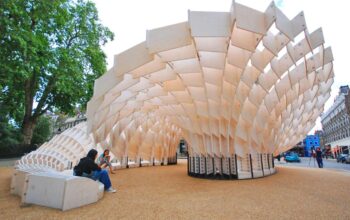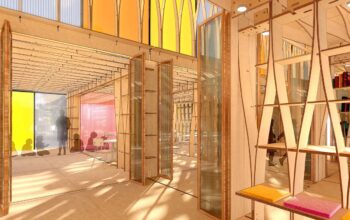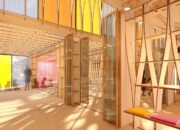In an era defined by consumerism, increasing cost of living, and a growing environmental consciousness, a quiet but powerful revolution is taking place in the world of housing: the Tiny House Movement. What began as a niche interest for a few free spirits has blossomed into a significant cultural and architectural phenomenon, challenging conventional notions of homeownership, space, and personal fulfillment. This movement advocates for living in small, minimalist dwellings, typically ranging from 100 to 400 square feet, designed for efficiency, sustainability, and financial freedom. It’s more than just downsizing; it’s about intentional living, reducing one’s environmental footprint, and prioritizing experiences over possessions. This article will explore the rise of the Tiny House Movement, its core philosophies, the practicalities of tiny living, its profound impact on individuals and communities, and the challenges and future prospects that lie ahead for this mighty growth.
The Genesis of the Tiny House Movement
While the concept of small-scale living is not new – historical examples range from ancient nomadic shelters to compact urban apartments – the modern Tiny House Movement gained significant traction in the late 20th and early 21st centuries, driven by a confluence of economic, social, and environmental factors.
A. Historical Precursors and Influences:
- Thoreau’s Walden: Henry David Thoreau’s 1854 book, “Walden; or, Life in the Woods,” chronicled his two-year experiment living simply in a small cabin, advocating for self-sufficiency and a life unburdened by material possessions. This philosophical cornerstone resonates deeply with tiny house enthusiasts.
- Early 20th Century Small Homes: Post-World War II, pre-fabricated homes and small, efficient bungalows became popular, reflecting a need for affordable and quick housing solutions.
- Jay Shafer and Tumbleweed Tiny House Company: Often credited as a pioneer, Jay Shafer built his first tiny home in 1999 and co-founded Tumbleweed Tiny House Company, offering plans and workshops. His advocacy helped popularize the idea of tiny living as a deliberate lifestyle choice.
B. Catalysts for Modern Growth: The movement’s acceleration in the 2000s and 2010s can be attributed to several key societal shifts:
- The 2008 Financial Crisis: The housing market crash and subsequent recession made traditional homeownership unattainable or undesirable for many. Tiny homes offered an affordable alternative, freeing individuals from crippling mortgages and debt.
- Environmental Awareness: Growing concerns about climate change, resource depletion, and ecological footprints led many to seek more sustainable lifestyles. Tiny homes, with their smaller energy demands and reduced material consumption, align perfectly with green living principles.
- Desire for Simplicity and Minimalism: A counter-cultural shift away from excessive consumerism gained momentum. People began to question the “bigger is better” mentality, seeking to declutter their lives and focus on experiences, relationships, and personal growth rather than accumulating possessions.
- Increased Mobility and Flexibility: For some, tiny homes, especially those on wheels, offered the allure of nomadic living, allowing them to travel, work remotely, or simply relocate without the burden of a fixed address.
- Media Exposure: Television shows, documentaries, and social media platforms played a crucial role in bringing tiny homes into the mainstream, showcasing diverse designs and inspiring countless individuals to consider the lifestyle.
The Philosophy of Tiny Living
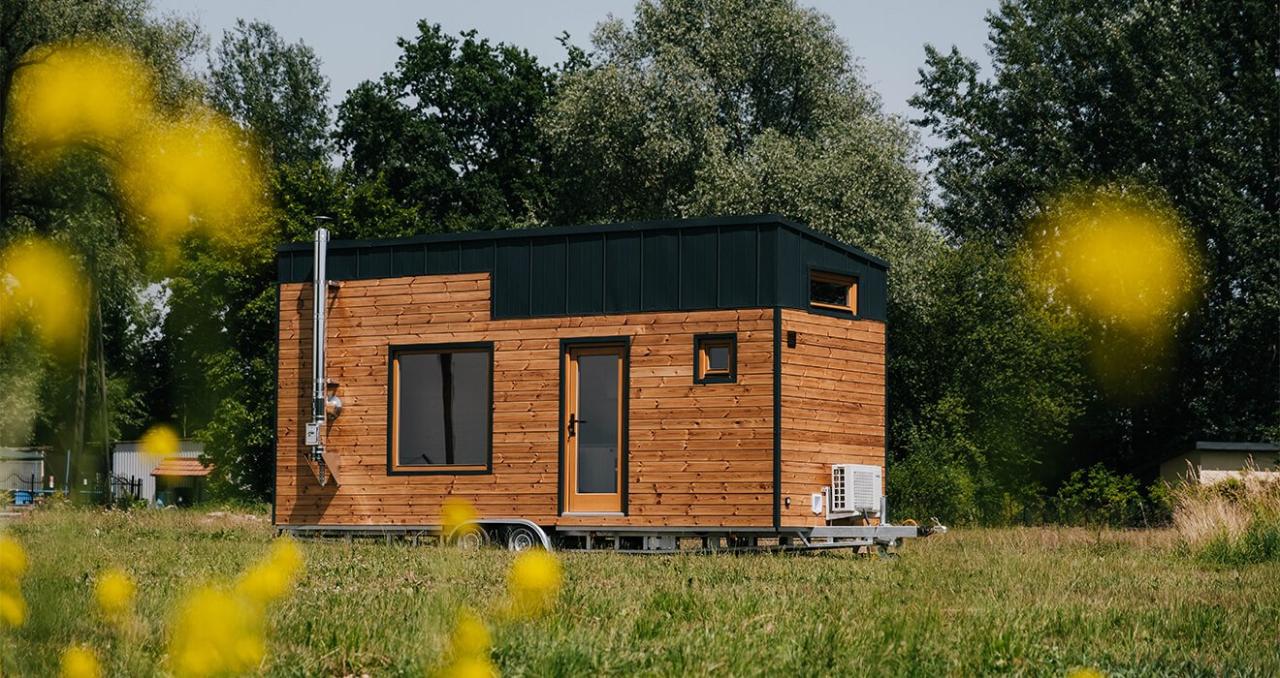
More than just a housing trend, the Tiny House Movement embodies a distinct philosophy centered on intentional living and redefined priorities.
A. Financial Freedom and Debt Reduction:
- Lower Upfront Costs: Tiny homes are significantly less expensive to build or buy than traditional houses, often costing between $30,000 to $80,000 for a professionally built model, and even less for DIY projects.
- Reduced Mortgage Debt (or None at All): Many tiny house dwellers pay for their homes outright or finance them with smaller loans, avoiding the decades-long mortgage commitments common with conventional homes. This frees up substantial income for other pursuits.
- Lower Operating Costs: Smaller spaces require less energy for heating and cooling, fewer materials for maintenance, and generally incur lower property taxes (if applicable) and insurance costs. This contributes to a significantly lower cost of living.
B. Environmental Sustainability and Reduced Footprint:
- Minimized Resource Consumption: Tiny homes require fewer building materials, leading to less waste during construction. Their smaller size also translates to significantly lower energy consumption for heating, cooling, and lighting.
- Reduced Carbon Emissions: Lower energy use means a smaller carbon footprint. Many tiny homes are designed with passive solar principles, high insulation, and often integrate renewable energy sources like solar panels.
- Water Conservation: Smaller living spaces encourage mindful water use, and many tiny homes incorporate rainwater harvesting systems and composting toilets to minimize water waste and sewage output.
- Less Material Waste: Living in a tiny space necessitates a minimalist approach, reducing the overall consumption of goods and the associated waste.
C. Simplicity, Minimalism, and Decluttering:
- Intentional Consumption: Living in a tiny home forces occupants to critically evaluate every possession. Only items that are truly functional, beautiful, or meaningful find a place, leading to a deliberate and thoughtful approach to consumption.
- Focus on Experiences Over Possessions: With less money tied up in housing and fewer possessions to manage, tiny house dwellers often report having more time and resources to dedicate to experiences, travel, hobbies, and relationships.
- Mental and Emotional Clarity: A decluttered physical space often leads to a less cluttered mind, reducing stress and increasing focus on what truly matters.
D. Flexibility and Mobility:
- Geographical Freedom (for Tiny Homes on Wheels): Tiny homes built on trailers offer the unique advantage of mobility, allowing owners to relocate for work, travel, or simply to experience different environments without selling their home.
- Adaptability to Life Changes: The smaller scale and often modular nature of tiny homes can make them more adaptable to changing life circumstances, such as a new job, family changes, or a desire for a different lifestyle.
Design, Construction, and Utilities of Tiny Living
While the philosophy is appealing, the practical aspects of living in a tiny home require careful consideration and innovative solutions.
A. Design Considerations for Small Spaces:
- Multi-functional Furniture: Every piece of furniture in a tiny home must serve multiple purposes. Examples include beds that fold into walls, tables that slide out from under counters, and stairs with integrated storage.
- Vertical Space Maximization: Tall ceilings, lofts for sleeping or storage, and vertical shelving units are crucial for maximizing usable space within a small footprint.
- Smart Storage Solutions: Hidden compartments, under-floor storage, built-in shelving, and creative uses of every nook and cranny are essential for organizing belongings in a tiny home.
- Natural Light and Ventilation: Large windows, skylights, and strategically placed vents are vital for making tiny spaces feel more open, airy, and comfortable, and for reducing reliance on artificial lighting and air conditioning.
B. Construction Methods and Materials:
- Tiny Homes on Wheels (THOWs): These are built on specialized trailers, making them legally considered Recreational Vehicles (RVs) in many jurisdictions, which can bypass some traditional building codes. They require lightweight yet durable materials.
- Foundation Tiny Homes: These are built directly on a permanent foundation, adhering to local building codes for conventional homes, and offering greater permanence and stability.
- Material Choices: Emphasis is placed on lightweight, durable, and sustainable materials. Common choices include wood framing, metal roofing, reclaimed materials, and high-efficiency insulation. Structural Insulated Panels (SIPs) are also popular for their strength and insulation properties.
C. Utilities and Off-Grid Living:
- Energy Systems:
- Grid-Tied: Connecting to the conventional electrical grid for power, similar to traditional homes.
- Off-Grid Solar: Utilizing solar panels to generate electricity, often coupled with battery storage systems, for complete energy independence.
- Propane: Used for heating water, cooking, and sometimes refrigeration.
- Water Systems:
- Freshwater Hookups: Connecting to a municipal water supply.
- Rainwater Harvesting: Collecting rainwater from the roof into tanks for use.
- Greywater Recycling: Treating water from sinks and showers for reuse in irrigation or toilets.
- Waste Management:
- Composting Toilets: An increasingly popular choice, these toilets separate solid and liquid waste, converting solid waste into compost, eliminating the need for a septic tank or sewer connection.
- Incinerating Toilets: Burn waste to ash.
- Traditional Flush Toilets: Require connection to a sewer system or septic tank.
- Heating and Cooling:
- Mini-Split HVAC Systems: Energy-efficient units for heating and cooling.
- Wood Stoves/Propane Heaters: Compact options for primary or backup heating.
- Passive Design: Relying on insulation, window placement, and shading to regulate temperature naturally.
Impact of the Tiny House Movement
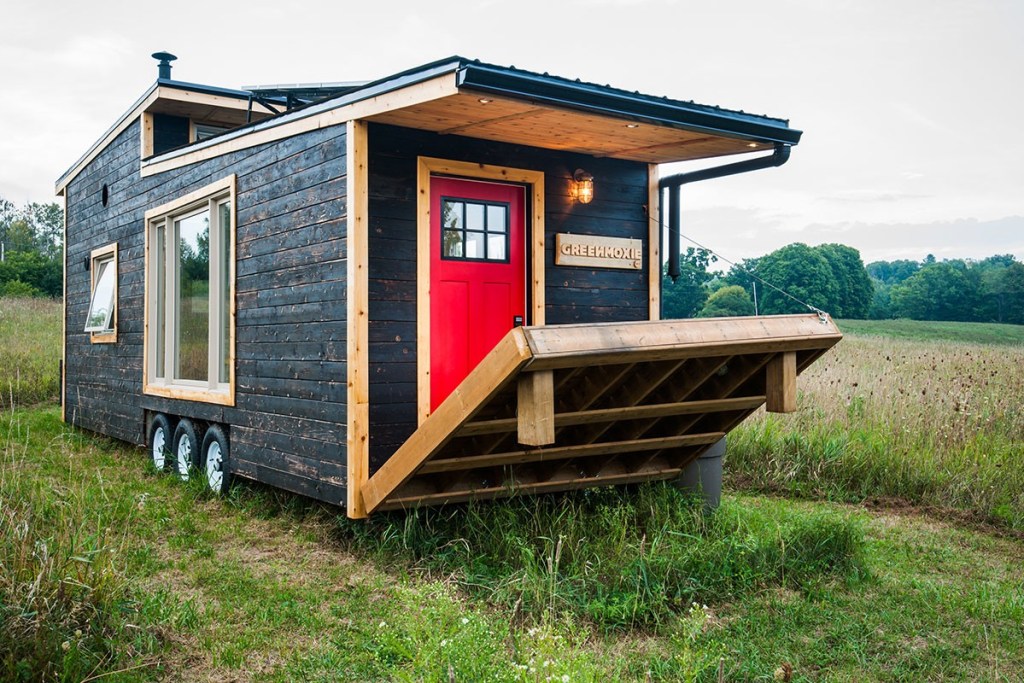
The ripple effects of the Tiny House Movement extend beyond individual lifestyles, influencing housing policy, community development, and societal perceptions.
A. Addressing Housing Affordability:
- Alternative to High Housing Costs: Tiny homes offer a crucial alternative for individuals and families struggling with soaring housing prices, particularly in urban areas.
- Reduced Homelessness: Some initiatives use tiny homes as a low-cost, dignified solution to provide shelter for homeless populations, offering a pathway to stability and reintegration.
- Affordable Housing Development: Developers and non-profit organizations are exploring tiny home communities as a model for creating affordable housing options.
B. Promoting Sustainable Development:
- Blueprint for Eco-Friendly Living: Tiny homes serve as a tangible example of how to live with a smaller environmental footprint, inspiring broader sustainable practices.
- Innovation in Green Building: The demand for efficient and sustainable solutions in tiny homes drives innovation in compact appliances, renewable energy systems, and eco-friendly building materials.
C. Reshaping Zoning and Building Codes:
- Challenges with Existing Regulations: Traditional zoning laws often have minimum square footage requirements or restrict RVs from being used as permanent residences, posing significant hurdles for tiny home placement.
- Emergence of Tiny House-Friendly Zones: In response to the movement’s growth, more municipalities are beginning to create specific zoning designations or amend existing codes to accommodate tiny homes, including establishing tiny house villages.
- Advocacy for Regulatory Reform: Tiny house advocates are actively lobbying for changes to building codes and zoning ordinances to better integrate tiny homes into the housing landscape.
D. Fostering Community and Connection:
- Tiny House Villages: The development of tiny house communities creates unique neighborhoods where residents share resources, foster strong social bonds, and often share a common philosophy of intentional living.
- Shared Amenities: In these communities, residents often have access to shared facilities like common kitchens, laundry rooms, gardens, and community spaces, which reduces the need for individual ownership of certain items and encourages interaction.
- Emphasis on Outdoor Space: With smaller indoor footprints, tiny house living often encourages greater engagement with outdoor spaces, whether it’s a personal deck or shared community gardens and parks.
Challenges and The Future of Tiny Homes
Despite its growing popularity, the Tiny House Movement faces several hurdles that will shape its future trajectory.
A. Legal and Zoning Obstacles:
- Defining “Home”: The primary challenge remains the legal classification of tiny homes. Are they RVs, Accessory Dwelling Units (ADUs), or standalone homes? This varies widely by jurisdiction.
- Minimum Square Footage Requirements: Many cities and counties have minimum size requirements for residential dwellings that tiny homes often cannot meet.
- Parking and Placement: Finding legal and affordable places to park tiny homes on wheels or build foundation tiny homes can be difficult due to restrictive zoning ordinances.
- Utility Hookups and Septic/Sewer Requirements: Regulations around connecting to water, sewer, and electricity can be complex and expensive for tiny homes not in designated communities.
B. Financing and Insurance:
- Difficulty in Securing Traditional Mortgages: Because many tiny homes do not meet conventional appraisal standards or are classified as RVs, securing traditional mortgages can be challenging. Personal loans or specialized RV loans are often used.
- Insurance Coverage: Insuring tiny homes can be more complex than traditional homes, depending on their classification (RV vs. permanent dwelling) and mobility.
C. Societal Perceptions and Acceptance:
- Stigma: Despite growing popularity, some still view tiny homes as a temporary solution or a sign of financial hardship rather than a deliberate lifestyle choice.
- NIMBYism (“Not In My Backyard”): Local resistance to tiny house communities can arise due to concerns about property values, density, or aesthetic compatibility with existing neighborhoods.
- Family Size and Long-Term Living: While tiny living works for singles or couples, accommodating families, especially with children, can be a greater challenge, and the long-term feasibility of tiny living for all stages of life is often debated.
D. Future Trends and Prospects:
- Increased Mainstream Acceptance: As more municipalities adapt their codes and the benefits of tiny living become more evident, expect greater integration of tiny homes into mainstream housing markets.
- Growth of Tiny House Communities: More planned tiny house villages and co-housing arrangements will likely emerge, offering legal parking, shared amenities, and a sense of community.
- Innovation in Design and Technology: Continued innovation in multi-functional design, smart home technology, and sustainable materials will make tiny homes even more efficient, comfortable, and versatile.
- Addressing Diverse Needs: The movement will likely diversify further, with tiny homes being adapted for various purposes, including emergency housing, student housing, senior living, and backyard ADUs for multi-generational living.
- Advocacy and Education: Ongoing advocacy from tiny house associations and educational efforts will continue to inform the public and influence policy, breaking down barriers to tiny living.
Conclusion
The Tiny House Movement is far more than a fleeting architectural fad; it represents a profound shift in values, challenging the status quo of housing and consumption. It offers a compelling alternative for those seeking financial freedom, environmental sustainability, and a simpler, more intentional way of life. While obstacles in zoning, financing, and societal perception remain, the movement’s persistent growth, driven by its undeniable benefits, indicates a strong trajectory towards greater acceptance and integration into the broader housing landscape. As we collectively grapple with issues of affordability, sustainability, and quality of life, the mighty growth of tiny homes stands as a powerful testament to the idea that less can indeed be more, offering a viable and inspiring vision for the future of living.

